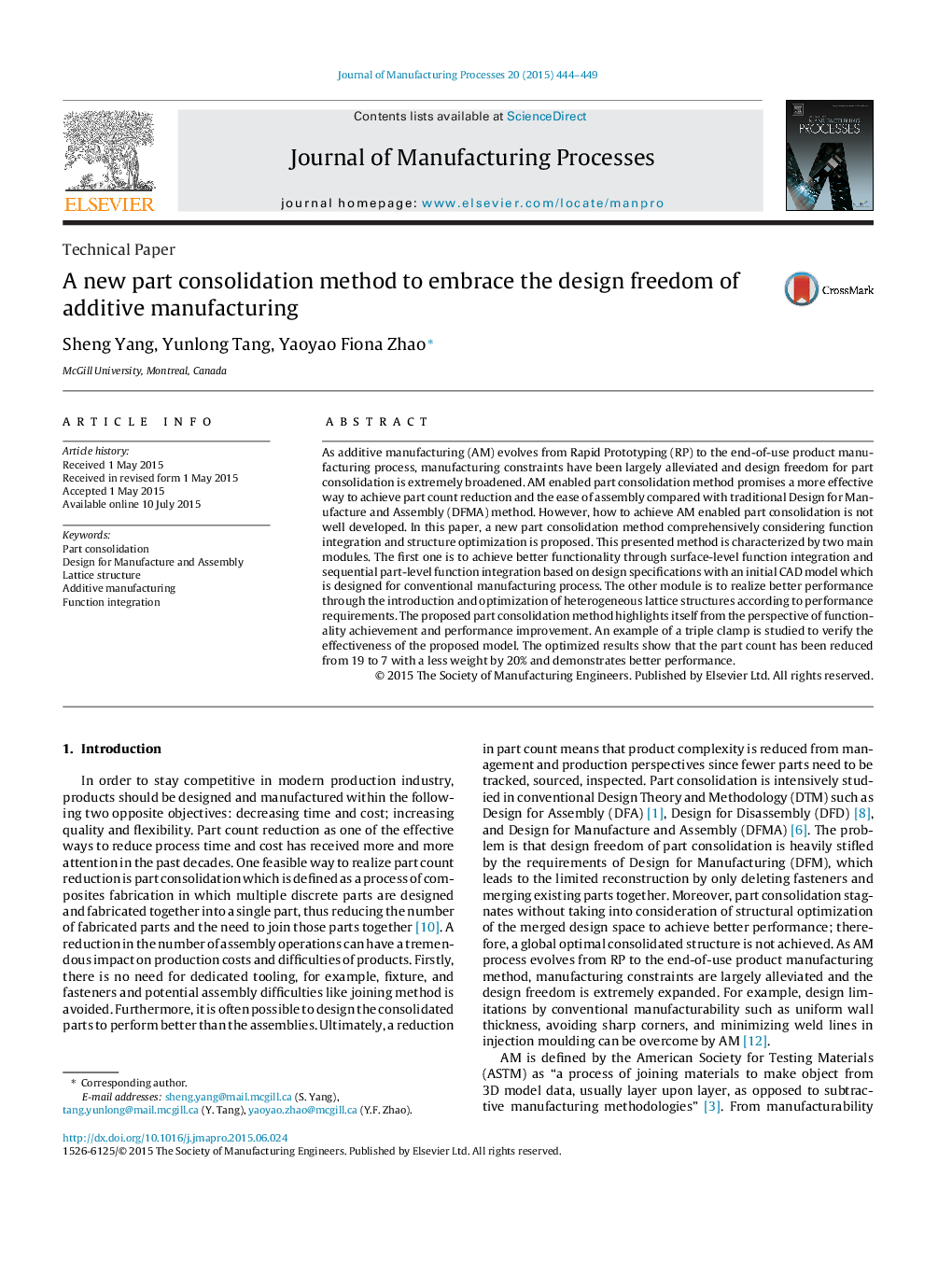| Article ID | Journal | Published Year | Pages | File Type |
|---|---|---|---|---|
| 1696879 | Journal of Manufacturing Processes | 2015 | 6 Pages |
As additive manufacturing (AM) evolves from Rapid Prototyping (RP) to the end-of-use product manufacturing process, manufacturing constraints have been largely alleviated and design freedom for part consolidation is extremely broadened. AM enabled part consolidation method promises a more effective way to achieve part count reduction and the ease of assembly compared with traditional Design for Manufacture and Assembly (DFMA) method. However, how to achieve AM enabled part consolidation is not well developed. In this paper, a new part consolidation method comprehensively considering function integration and structure optimization is proposed. This presented method is characterized by two main modules. The first one is to achieve better functionality through surface-level function integration and sequential part-level function integration based on design specifications with an initial CAD model which is designed for conventional manufacturing process. The other module is to realize better performance through the introduction and optimization of heterogeneous lattice structures according to performance requirements. The proposed part consolidation method highlights itself from the perspective of functionality achievement and performance improvement. An example of a triple clamp is studied to verify the effectiveness of the proposed model. The optimized results show that the part count has been reduced from 19 to 7 with a less weight by 20% and demonstrates better performance.
